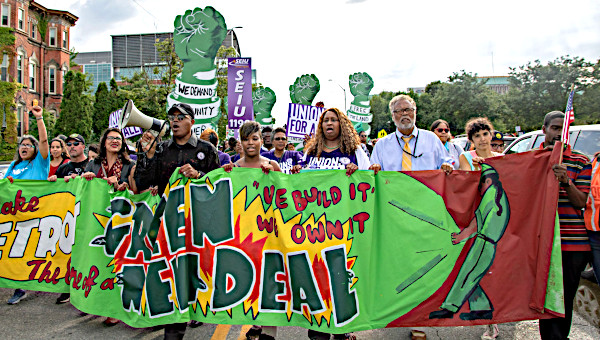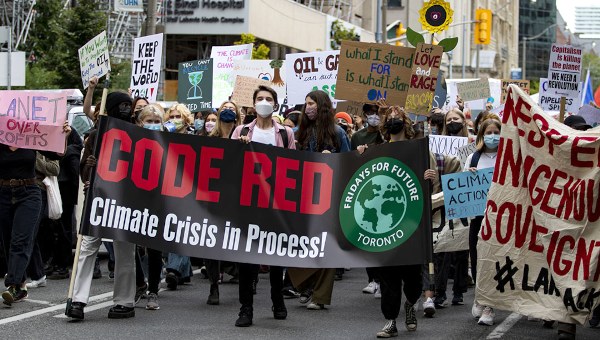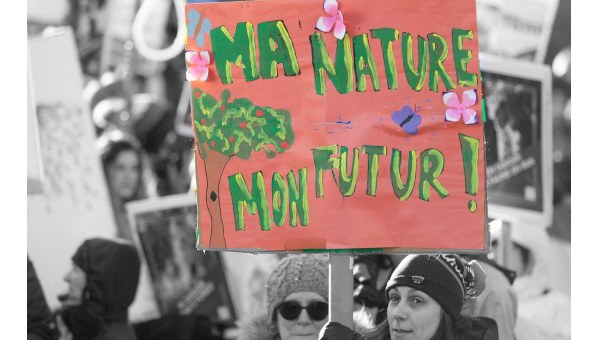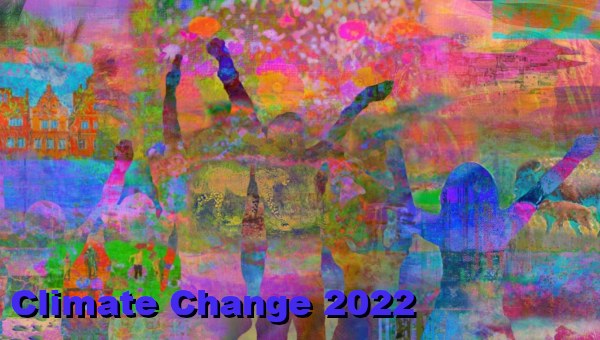Siloed Thinking, Climate, and Disposable People
Thinking in siloes about the climate and about our planet’s people puts us at risk of increasing climate disruption and massive loss of life. This year the climate meeting, COP24, is in Katowice, Poland, from December 3 to December 14.
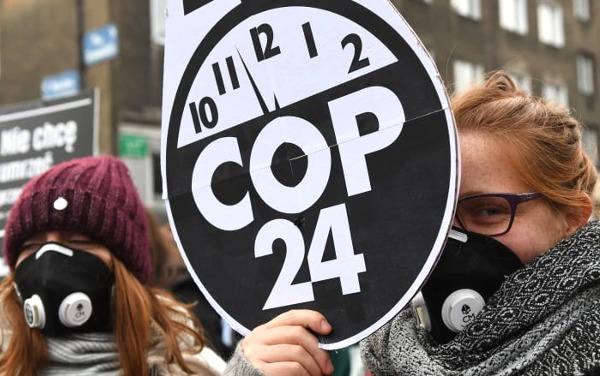
These international meetings were set up by the United Nations and led to the Kyoto Protocol, calling for a 6%-8% greenhouse gas reduction below a 1990 baseline by the end of 2012 and aimed to keep warming to 2C above the 1800 baseline. At this time, emissions continue to rise precipitously. The climate meetings are consistently plagued by evasive goals regarding emissions reduction and temperature targets, and by delayed funding for poorer nations.
Several years ago I attended a meeting of major environmental organizations, brought together by the Climate Action Network to hear the results of a survey conducted on how to best inform the public about climate change. The consultants advised giving people something they can do, focusing on what they directly experience, and being positive. Climate solutions should be contextualized as lifestyle choices with a promised reward such as more free time; money back from carbon tax rebates; harmony with nature; and a society of high tech living based on “clean energy.” Glenn Greenwald describes how American leaders get away with murder and much else through a positivity of “moving forward” and leaving out the past. Paul Jay of the Real News Network speaks with alarm about the infantilization of the public when “we need to tell people the whole truth about the urgency of this historical moment… The existential threat of the current moment.” What sets British Labour Party leader Jeremy Corbyn apart is his treating people as adults.1 He talks about wars, climate, nuclear weapons.
Crucial Realities
Three current climate news items leave out crucial realities: the October IPCC warning about the dangerous differences between 1.5C and 2C, advising greenhouse gas reductions of 45% by 2030; the Nobel economics prize awarded to William Nordhaus for his work on the carbon budget which would allow an additional 270 billion tonnes into the atmosphere; and the California forest fires.
From my psychoanalytic work and academic background in history, I have especially noticed the human side of the climate disaster and the constricted way of thinking about it. Thinking in siloes makes it difficult to see connections and ask questions. Climate deniers refuse to connect human CO2 emissions and climate change, but a large number of those who do recognize anthropogenic climate change still do not examine a range of critical interactions. Siloes contain discrete facts, often quantitative, while crucial concepts for understanding climate and society have fallen into disuse: externalities, life-cycle analysis, precautionary principle, history, multiple causes and effects, systems.
The United Nations’ Intergovernmental Panel on Climate Change (IPCC) timeline and the Nordhaus budget grossly misconstrue the climate system. It makes a great deal of difference in understanding the rapidity of climate change if the 1C rise is simply measured from 1780, as if it takes several hundred years to increase temperature by 1C. The World Meteorological Organization reported 0.2C rise between 2001 and 2010 above the previous 1991-2000 average. This acceleration would seem to indicate that there is no chance of holding temperature rise at 1.5C. The latest news is that global emissions increased this year and are predicted to rise even more in 2019. Every year of delay makes a difference; the Green New Deal will not be fully formulated until 2020, and then how long until implementation?
The magnitude of carbon dioxide’s effects on the entire Earth system still does not receive proper attention. James Anderson, professor of atmospheric chemistry, clarifies that various factors carry the earth in and out of glacial periods, but all the variables are overwhelmed by increasing or decreasing CO2 in the atmosphere. On the basis of paleoclimate evidence, Hansen found that there is an inevitable loss of all Earth’s ice when CO2 concentrations are in the range of 350 parts per million (ppm). Greenhouse gas concentrations are now around 405ppm and are rising 3ppm/year. The rate of increase is unprecedented in Earth’s history.
Secondly, Earth’s five previous extinction events were precipitated by changes in CO2 concentration.2 By the time of the 2009 Copenhagen climate meeting, James Hansen warned that the 2C target was dangerously irresponsible and that the IPCC underestimated the rapidity of climate change because its models left out the extent of Arctic ice melt. Less than 1C rise has already caused irreversible climate shifts. The temperature difference between the polar and tropical regions has already led to changes in the polar vortex, shifting the jet stream and the gulf stream.
Nordhaus’ budget and the IPCC’s 45% reduction/12 year target do not take into account amplifying feedbacks and the condition of carbon sinks. Hansen explains how climate is a system that balances what is added with what is subtracted: amplifying feedbacks add additional heat and greenhouse gases, and negative feedbacks absorb heat and CO2 – the ocean, soil, and forests are the Earth’s primary carbon sinks. Higher temperatures generate the release of much more potent heat trapping gases, especially water vapor and methane.
The deadly forest fires in California transformed these forests from absorbers to emitters of CO2. Forest fires are hotter and last longer than in the past. These fires sterilize the soil, destroying both the soil and forest carbon sinks. As temperatures rise, reforestation is no longer an uncomplicated solution to climate change. The California fires are also situated within a decayed political system: prisoners were used for firefighting and paid $1/hour for incredibly dangerous and demanding work at a time when public fire departments are increasingly defunded; and money talks as contractors are allowed to build in unsafe areas.
Conceptual confusion also misrepresents species extinction by leaving out the interdependent processes of a system. Threats within one species, such as bees or phytoplankton, can cascade into a broad collapse – threatening food supply, or at worst – depleting Earth’s oxygen.
Constellation of Events
The siloing of climate change as a distinct system distorts its embeddedness with a regressing global political system. Hansen testified to Congress about the climate emergency in 1988. G.H.W. Bush invaded Panama in 1989, and a constellation of events in the early 1990s shifted the world order.
In January 1991 the U.S., under George H.W. Bush, invaded Iraq with high tech war on Baghdad’s civilians and infrastructure and on the environment.
In June 1991, the Soviet Union collapsed, leading soon after to moves toward full-spectrum U.S. military and economic dominance and to NATO’s provocative expansion to the East.
In December 1992 the Earth Summit, attended by 118 heads of state, prioritized economic sustainability over environmental protection, and put in place an international structure to oversee climate change. It was at this Earth Summit that the World Bank, in its bid for financial management of the Global Environmental Facility, concealed their report that 240,000 people would be displaced by India’s Narmada Dam. The World Bank continued to fund large coal-fired power plants and rejected its own report recommending a moratorium on large hydro dams.3 Subsequently, Al Gore successfully pressed for the exemption of military emissions in the Kyoto Protocol.
The end of the Cold War was a lost opportunity to eliminate nuclear weapons and to keep CO2 emissions below 350ppm. What ensued were rapidly increasing greenhouse gas emissions, permanent war and militarization, the dismantling of public infrastructure, unprecedented inequity and mass migration of at least 1/6 of the world’s people into urban slums, and an overall displacement of over 65 million people.
For decades, the same single measures, all with vague timelines, are confidently offered as sufficient solutions while ignoring research that disproves these claims. Solutions like carbon taxes and cap-and-trade have proven to be ineffective in reducing emissions and are often disastrous for people. Admonishing people to appreciate nature has also led to displacing millions of people by large environmental NGOs that buy up land for conservation and tourism to “natural” places cleared of people.4 Cap-and-trade carbon credit schemes result in vast displacement when land is confiscated and forests burnt for biofuel cultivation. Brazilian President Jair Bolsonaro has accused the landless peasant movement of terrorism as he opens the Amazon for deforestation.
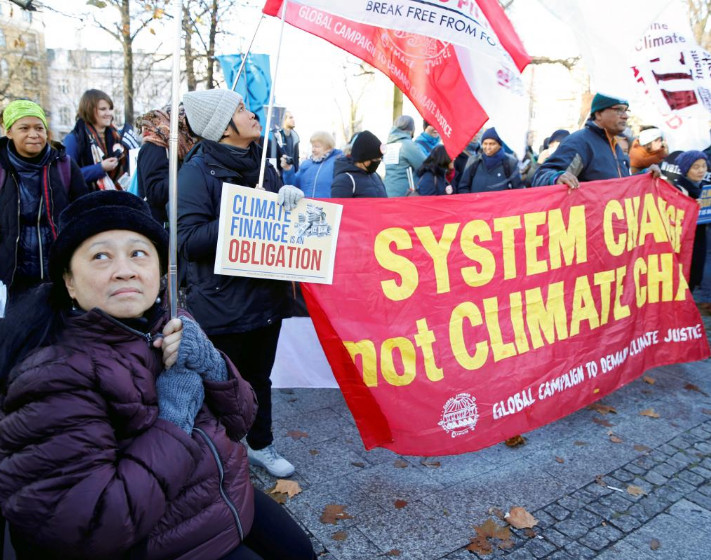
Changing consumer habits grossly misrepresents the way most people live. Using UNCTAD figures, Patrick Bond writes that 60% of the world live in extreme poverty. Eco-socialist Ian Angus describes Ira Rennert, owner of a mining corporation responsible for one of the most polluted places on earth. As an individual “Rennert represents hyperconsumption at its worst… But as the owner of the Renco Group Inc., he has shortened the lives of tens of thousands of people and laid waste to entire ecosystems… As a capitalist, he has power over the way that other people live – and the way that they die.”5
Another lost chance for changing direction was the 2009 Copenhagen climate meeting. Shortly before, a report was submitted by the Global Humanitarian Forum chaired by Kofi Annan, that an estimated 300,000 deaths/year due to climate change. “The deathly silence of this crisis is a major impediment for international action to end it. In industrialized countries, climate change is still considered a solely environmental problem. It is seen as a distant threat that might affect our future. A viewpoint reinforced by pictures of glaciers and polar bears — not human beings.” In 2010, the Global Humanitarian Forum shut down for lack of funds. Climate is still depicted as a threat to the “planet”, to organized civilization, to pristine nature, to other mammals – but not to people.
The Copenhagen meeting failed to establish binding targets to reduce emissions and postponed compensation to poorer nations. The 2010 Cancun COP set a goal of collecting $100-billion/year by 2020. The Green Climate Fund replaced the World Bank in managing climate finance, and reports that $4.6-billion has been committed, but only $1.62-billion has been implemented. Bloomberg quotes “an official” UN group that the fund is now $70-billion. The U.S. and Australia have pulled out.
The Copenhagen meeting also failed to address the military’s part in climate change. As Sara Flounders reported: “…In evaluating the U.N. Climate Change Conference in Copenhagen – with more than 15,000 participants from 192 countries, including more than 100 heads of state, as well as 100,000 demonstrators in the streets [how] the worst polluter of carbon dioxide and other toxic emissions on the planet is not a focus of any conference discussion or proposed restrictions?”
The military’s role in climate change is not in the Extinction Rebellion and the Green New Deal. The Sanders/Varoufakis Progressive International does not mention the military. Naomi Klein’s new article enthusiastically supporting the Green New Deal refers to the shortcomings of Copenhagen but does not mention the military.
The direct emissions are staggering: the B-52 Stratocruiser uses roughly 3334 gallons/hour, the battleship USS Independence consumes 100,000 gallons of dirty bunker fuel/day. The Carter Doctrine locks in U.S. entitlement to fossil fuels, from anywhere in the world, for security reasons. The U.S. military has destroyed vast forest sinks in the Koreas, Vietnam, Laos, and Cambodia, and continues to destroy the soil carbon sink in post 9/11 wars. Emissions from its data centres may also be exempt (for perspective, in one month “the power consumed by the entire bitcoin network was estimated to be higher than that of the Republic of Ireland”).
We should be frightened that the military “securitizes” climate change as a “threat multiplier.” At this time of inevitable large-scale migration, borders are walled and militarized.
The most proffered solution has been 100% renewable energy together with jobs in the green power sector. But again, a part is taken for the whole. As far back as 1965 former president L.B. Johnson spoke about anthropogenic climate change and the transition to renewables. Solar and wind only make up a fraction of the entire energy mix. Without stringent regulation and the option to eliminate whole areas of production, large emitters will continue to use fossil fuels for decades to come. The logic has been to expand until renewables are usable: larger cars, hundreds of thousands of flights/year, data centers, more deforestation.
Historians Bonneuil and Fressoz write that “there never has been an energy transition. The history of energy is not one of transitions, but rather of successive additions of new sources of primary energy… the use of coal decreased in relation to oil, [but] it remains that its consumption continually grew.”6 China is lauded for producing solar panels, but this is far outweighed by China’s vast Eurasian fossil fuel corridor of pipelines. rail, and megaports, built to transport and extract coal, oil, and liquefied natural gas from the Atlantic to the South China Sea. Is China realistically a beacon of hope with its history of tens of millions killed during the Great Leap Forward, Tiananmen Square, its current treatment of labourers and minorities?
Thinking is so constricted that immediate ways to cut emissions are not even discussed: lowering speed limits, carpools, free public transit, minimizing the use of cement and steel, eliminating all inessential shipping and aviation, a moratorium on inessential production, a safety net for workers, enlarging the job sectors that are essential for human survival. Energy could be strictly rationed using a contraction and convergence model that would ensure basic necessities for all people. The Rennerts would have to contract personal and corporate energy use by 99% and pay reparations. It’s ironic that the rapid build up of the WWII war machine is held up as an example of what’s possible, for what’s required now is dismantling the entire military.
The monetization of life is normalized. Marx understood this debasement of people as thing, as commodity, as the core of capitalism. It is now commonplace to compare military spending with education or health spending, as if military “budgets” legitimately price their weapons system but disappear human life as an externality. Numbers confer factuality as in the pre-conceptual concrete thinking of young children. Monbiot exposes how the Stern Report on the economics of climate change also monetizes life. Stern writes that it makes economic sense to expand Heathrow Airport because it would save time for the rich whose time is worth more money than the death of a poor person due to aviation’s substantial greenhouse gas emissions. Air travel can be offset by a small fee as in the medieval practice of buying indulgences to offset sins.
Contrary to assumptions about an inherent incapacity to think through complex human situations, there are many examples of fully informed people figuring out together what is to be done, like the long history of people negotiating water disputes, or people managing the commons. Obviously, others come together and treat people as disposable. In 2010 Nnimmo Bassey of Nigeria told the Durban COP meeting that their inaction was “A death sentence for Africa.” In 2013, as devastating typhoons hit the Philippines, delegate Yeb Sano told the Warsaw COP to “stop this madness” and “if not now, when?” Will COP 24 participants go beyond self-congratulation and understand the words “stop” and “death”? Will delegates take the radical measures necessary to immediately address the sources and not just the symptoms of climate change? That would also mean addressing our destructive economic system and how it continues to massively transform the climate system and wreak human disaster. •
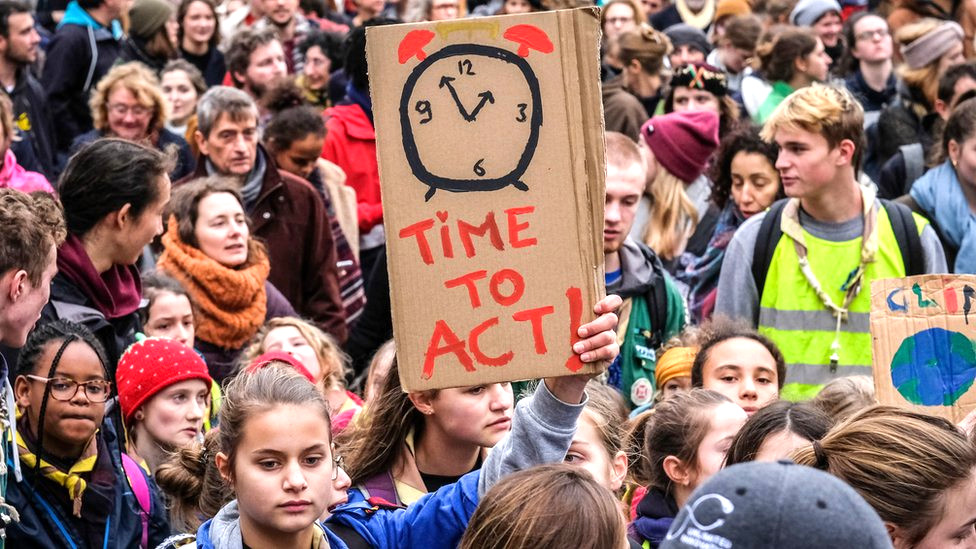
Endnotes
- Glenn Greenwald (2011), With Liberty and Justice for Some. Tariq Ali (2018), The Extreme Centre, p. 112.
- James Hansen (2009), Storms of My Grandchildren: The truth about the coming climate catastrophe and our last chance to save humanity.
- Eric Toussaint (2006), The World Bank: a critical primer, p. 183ff.
- Mark Dowie (2009), Conservation Refugees: the hundred year conflict between conservation and native peoples.
- Ian Angus and Simon Butler (2013), Too Many People: Population, immigration and the environmental crisis.
- Christophe Bonneuil and Jean-Baptiste Fressoz (2013), The Shock of the Anthropocene, p. 101.


